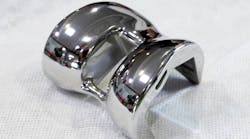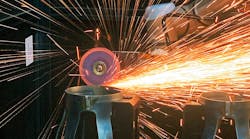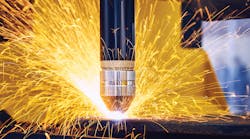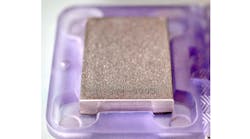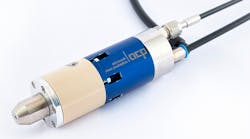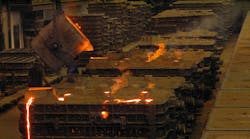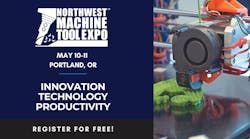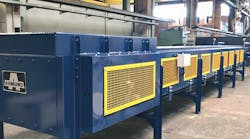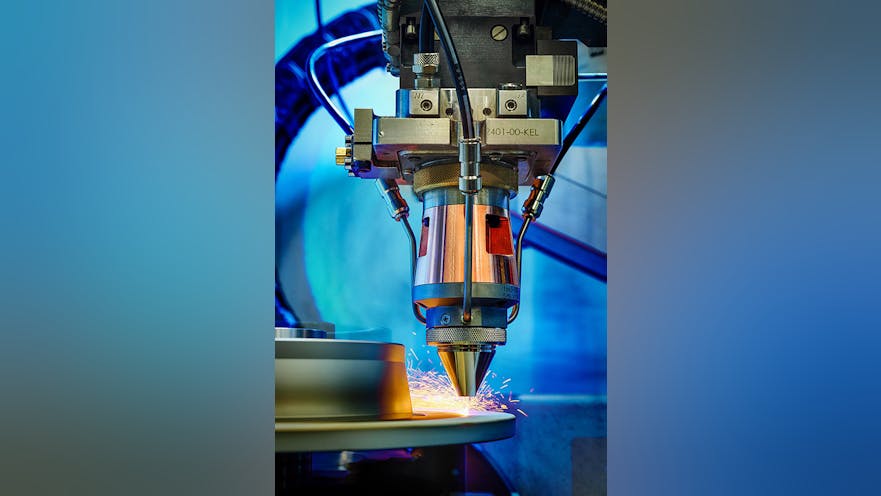More than most automotive castings, brake discs are subjected to repeated mechanical loads. The surface abrasion that results from this nearly constant pressure produces a fine particulate matter that presents a considerable environmental problem. One approach to reducing the environmental effects of mechanical overload on automotive brakes may be available in a new coating process developed by the Fraunhofer Institute for Laser Technology and the RWTH Aachen University research center, in Germany. By using “extreme high-speed laser material deposition” (EHLA), the developers have devised a way to provide brake discs with effective protection against wear and corrosion. Just as notable, the coating procedure is both fast and economical, according to the developers.
Brake discs are commonly cast in gray iron that contains lamellar graphite phases. The advantage of this material is that it provide good thermal conductivity and high thermal capacity, and both of these at an affordable unit cost. The disadvantage of gray iron is a strong propensity to corrode, as well as the high material wear during service, which together generate substantial emissions of fine particulate matter.
To date, metalcasters have had difficulty using electroplating or thermal spraying to coat disc castings well enough to reduce the volume of emissions. The problem, according to Fraunhofer ITL, is that those processes do not produce a metallurgical bond between the cast iron and the protective coating. Besides being ineffective, both processes also are expensive and inefficient in the particular application.
Economic and technical advantages — Fraunhofer ILT developed the laser-based alternative together with the Digital Additive Production faculty at RWTH Aachen. “The EHLA process is ideal for use in the automotive industry, especially for coating brake discs,” according to Thomas Schopphoven, research fellow and team leader for productivity and system technology with the Laser Material Deposition group at Fraunhofer ILT. “Conventionally, it’s very difficult to coat brake discs because they have to withstand high loads, and there are also economic and environmental considerations. But, with EHLA it’s possible now to apply coatings that form a metallurgical bond with the base material of the disc and therefore adhere very strongly. Unlike conventional coatings, these do not flake and chip.”
Coatings produced by conventional processes are porous and likely to crack upon hardening. With the EHLA process, the coating remains intact and thus forms a longer-lasting, more effective seal for the casting surface. This extends the service life of the casting, and prevents early failure as a result of damage to the surface of the brake disc. Moreover, the EHLA process is suitable for a range of materials, not only gray iron, so it is possible to define an environmentally friendly coating for a specific application.
In fact, the process is a new process variant on laser material deposition, which has been proven very effective in critical applications, such as repairing turbine blades.
Process speed cuts heat input — EHLA offers several particular advantages, however. The coating powder particles are melted directly within the laser beam, not in a melt pool on the surface of the component. Because the melt pool is fed by liquid drops of material rather than solid particles of powder, the coating process is faster, rising from 0.5–2 meters per minute with conventional laser material deposition to as much as 500 meters per minute.
This also reduces the exposure to heat of the material being coated. Unlike conventional laser material deposition, where the heat-affected zone can have a depth of one or more millimeters, with the EHLA process thermal exposure remains in the micrometer range. So, it’s possible to apply entirely new material combinations, such as coatings for aluminum or (as with the brake discs) cast-iron alloys.
The low-heat input prevents carbon dissolution from the iron substrate into the melt, which otherwise would result in brittle phases, pores, joining defects, and cracks in the coating and bonding zone. In other words, it is now possible for the first time ever to provide gray-iron brake discs with an effective coating that is firmly bonded with the base material.
With laser material deposition, the coating produced usually is at least half a millimeter thick. This consumes a lot of material and also makes finishing substantially more complicated. By contrast, the EHLA process produces very thin layers — between 25 and 250 micrometers. As a result, the coating is both purer and smoother, with roughness reduced to around one-tenth of its previous value.
Moreover, the EHLA process uses as much as 90% of the fed powder material. Therefore, it is extremely resource-efficient and more economic. The basic requirements for the use in an industrial, mass-production setting are feasible.
According to Fraunhofer ILT, industrial application for the EHLA process could be a reality soon. Initial investigations have demonstrated that the process is capable of producing coatings in different material combinations for conventional brake discs made of gray cast iron. A system that is ready for use in mass production, including a modified grinding process for finishing the components, is being prepared now construction at HPL Technologies GmbH, a company that develops technologies and machine systems for laser-coating and -finishing, in particular of rotationally symmetrical components.
